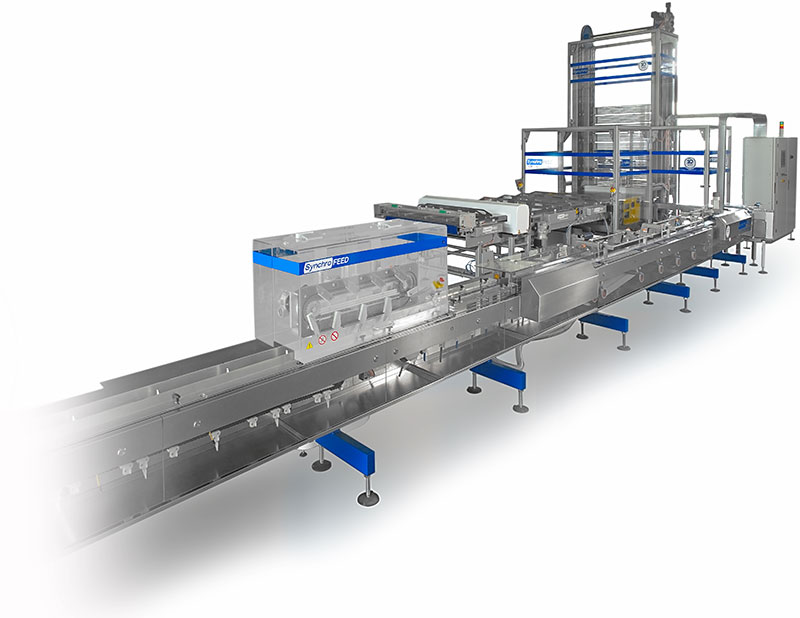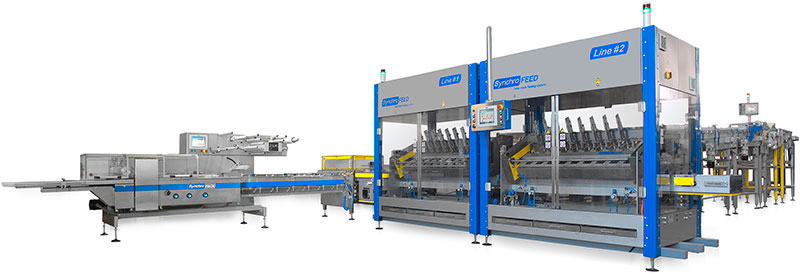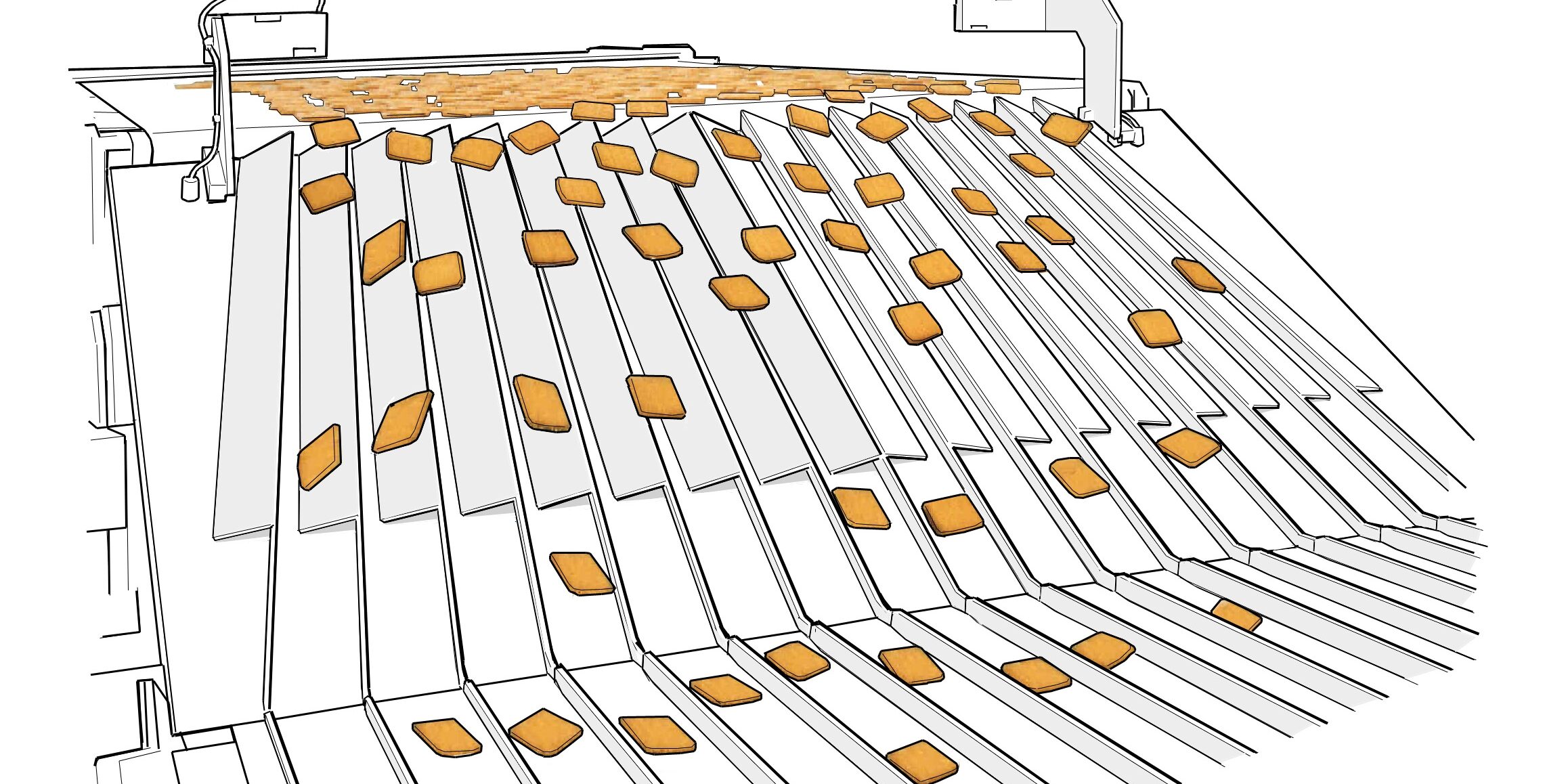If you already have a flow pack wrapper, you know that product feeding is a critical factor in achieving maximum efficiency. Automating this phase with an automatic feeding system eliminates unnecessary downtime, reduces operator dependence and allows the machine to run at its optimum capacity. Without consistent and accurate feeding, variations in product flow can lead to misalignment, loss of synchronization and a reduction in effective production.
A good automatic feeding system adapts to the rhythm of the wrapper, ensuring a stable and homogeneous supply, avoiding waste and minimizing manual intervention. In this article, we look at the main options for optimizing product feeding and how their implementation can improve the performance of your packaging line.
The need to automate feeding in packaging
In a world where efficiency is the key to success, relying on manual processes for product feeding can limit a company’s production capacity. Lines that do not keep pace with technological advances are often slower, error-prone and generate higher costs in the long run. Automation offers a smart solution to optimize resources and improve the usability of flow pack wrappers.
The advantages of automating the feeding system in the packaging process are clear: faster product infeed, reduced human error and flexibility to adapt to different product sizes and shapes.
Key benefits of the automation of the feeding systems
Automation brings significant improvements in the packaging process:
- Increased operational efficiency. Automation allows production speed to be multiplied. This translates into the possibility of fulfilling larger orders in less time.
- Improved product quality. By reducing manual handling, the risk of product damage, contamination and variability is reduced.
- Long-term cost reduction. Optimized film consumption, reduced errors and labor efficiencies result in significantly reduced production costs.
- Accurate machine monitoring. Automation maximizes machine monitoring, making it easier to identify problems or performance drops.
The automation of the feeding systems of packaging lines
Technology has advanced to offer solutions adapted to different types of products and production needs. At Synchropack we have developed three different automatic feeding systems to complete production and packaging lines.
-
Handling and Feeding Systems (HFS)
They receive the products, organize them in portions and transfer them in an automated way to the wrappers. Their main objective is to maximize the efficiency of the packaging process, reducing manual intervention and ensuring accurate and uniform handling of the products.
-
Conveyor Feeding Systems (CFS)
They automate the transport, distribution and synchronization of products prior to the flow pack wrapping. Their integration into high production lines optimizes product handling and maximizes automatic packaging performance.
-
Robot Feeding Systems (RFS)
Automate product handling by means of different types of robots, selected according to the weight, speed and level of precision required. They are designed to optimize production processes, improve efficiency and reduce manual intervention. Thanks to their versatility, these systems can be integrated into different industrial environments, offering solutions adapted to different volumes and types of products.
Synchropack Case Studies
At Synchropack we have developed complete packaging lines, formed by flowpack wrappers preceded by different automatic feeding systems. Some of the success stories are:
Case 1: wrapping of rice crackers in piles
Complete line for wrapping rice crackers in piles of two units at 200 packs per minute. The line is composed of a range distribution system, a vertical buffer, a high-speed synchronizer, a dynamic pile system and a Pack 9000 RT flow wrapper.

Case 2: individual wrapping of cookies
Complete line for individual wrapping of chocolate chip cookies at 350 packs per minute. The line is composed of a production diverting system, a product orientation system, a high-speed synchronizer and a Pack 900 flow wrapper.

Case 3: Wrapping of edged cookies
Complete line for the wrapping of edged cookies in groups of 30 units at 80 packs per minute. The line is composed of a cookie distribution and stacking system, a double SAF (slug cookie feeder), a STT (transfer of edged cookies with tracking) and a Pack 900 RT BOE flow wrapper.

A commitment to the future
Automating loading in your packaging process is a strategic investment that can transform the efficiency of your production. Error reduction, increasing processing speed and improving product quality are just some of the advantages offered by this technology.
Are you ready to make the move to automation? Our team can help you find the best solution for your specific product needs. You can contact us through this form to study the feasibility of automating your load.



